A Unique Privilege | February 16, 2024
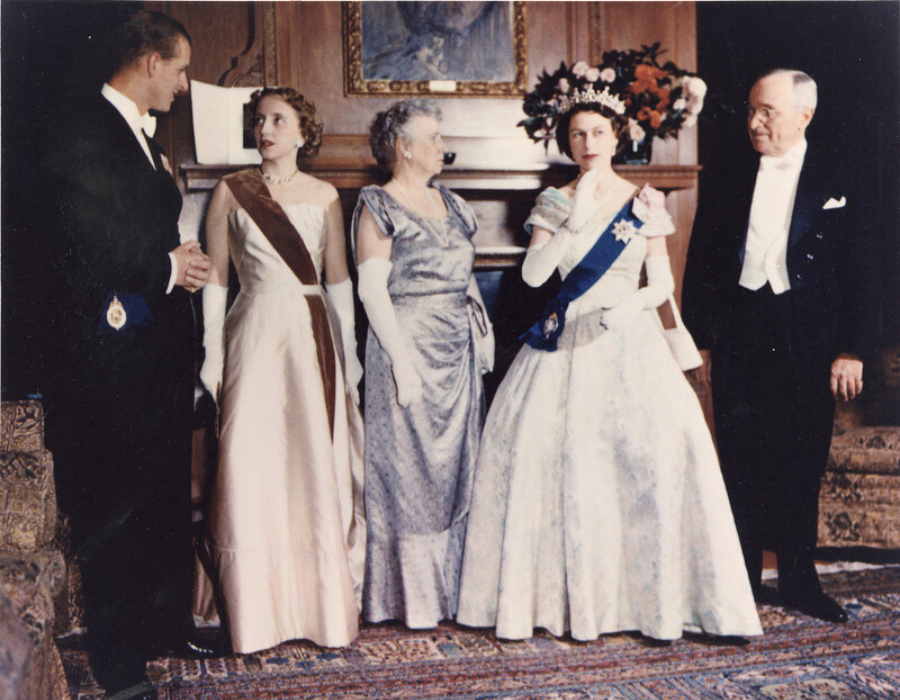
Margaret Truman in the White House
By Natalie Alms
On June 11, 1945, nearly two months into his presidency, Harry Truman wrote to his daughter Margaret: “you evidently are just finding out what a terrible situation the President’s daughter is facing … so you must face it. Keep your balance and go along just as your dad is trying to go.”
Like many presidential children, Margaret Truman experienced both the both the benefits and challenges of being a member of the first family. Surely, Margaret appreciated this advice during her father’s tenure as president.
Margaret Truman, the daughter of Harry S. Truman and Elizabeth “Bess” Truman, was born in Independence, Missouri on February 17, 1924. She was a 21-year-old in her junior year at George Washington University when her father became president of the United States on April 12, 1945, after the death of President Franklin Roosevelt.
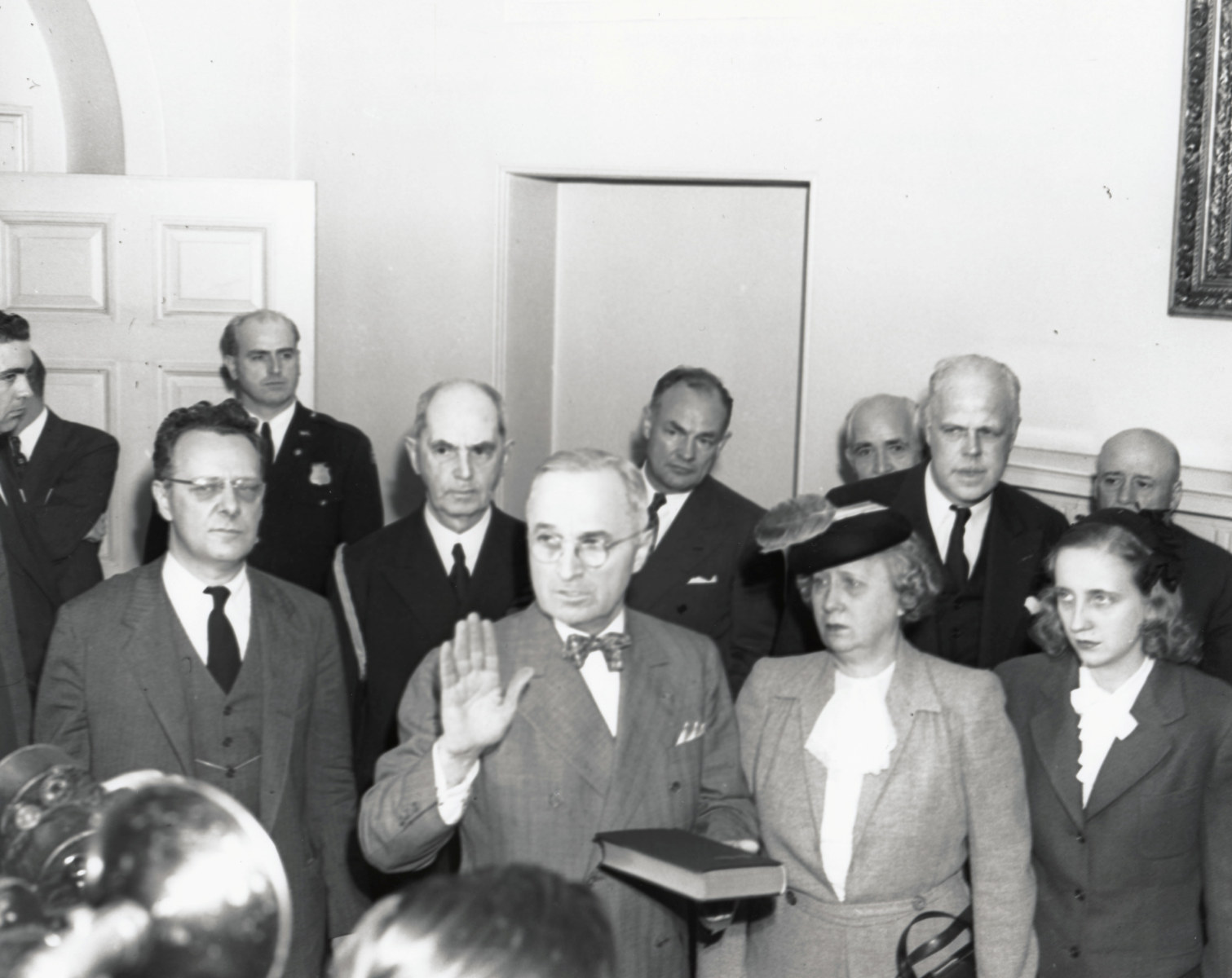
Harry Truman takes the oath of office on April 12, 1945 in the Cabinet Room of the West Wing. His wife Bess and daughter Margaret stand beside him. (National Archives)
Margaret’s pursuit of a singing career was a major part of her life during her father’s presidency. The press and the country were fascinated with her aspirations to join show business. After graduating in 1946, Margaret moved to New York City to work on her singing career.
Margaret made her radio debut on the Ford Motor Company’s “Sunday Evening Hour” in Detroit on March 16, 1947, accompanied by the Detroit Symphony. A record 15 million people reportedly listened to the ABC broadcast. Although she was not residing at the White House at the time, the White House switchboard was forced to temporarily shut down due to such a large volume of calls congratulating her on the breakout performance.
After her first full-length concert, which was held at the Syria Mosque auditorium in Pittsburgh, Pennsylvania, Margaret had nine curtain calls and sang three encores. The press noted her exemplary stage presence and rapport with the audience.
However, not all critics were as complimentary. Paul Hume, a Washington Post music editor, wrote a rather negative review of Margaret’s performance at Constitution Hall on December 5, 1950. He argued that Margaret was “flat a good deal of the time” and lacked a “professional finish.” President Truman wrote Hume a letter in response, which was subsequently released in the press. In it, Truman warned that if they ever met in person, the music critic would need a “new nose” and a “lot of beefsteak for black eyes.”
Margaret Truman held a press conference to address the feud, and told reporters that the publicity would probably help sell tickets.
She later wrote that her father did not regret sending the letter because “he insisted he had the right to be two persons – the President of the United States and Harry S. Truman, father of Margaret, husband of Bess Wallace.” Certainly, he had to balance both roles during his time in the White House. For example, President Truman purposefully did not attend Margaret’s concert debut at the Syria Mosque auditorium in Pittsburgh for fear that his presence would overshadow her performance. In an October 1947 letter to Margaret, the president wrote, “I’m more anxious for your complete success than you are if that is possible.” While they tried their best to protect Margaret from the stinging words of critics and columnists, the Trumans were both deeply supportive of her ambitions.
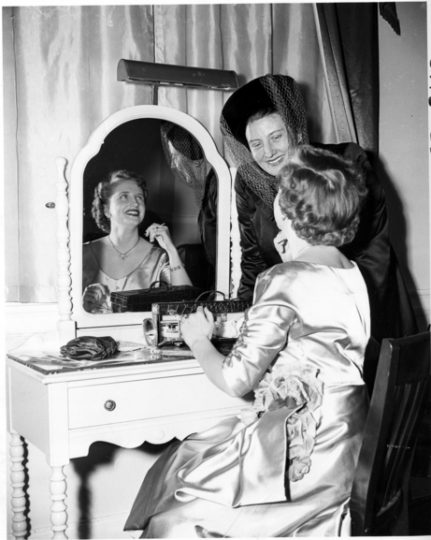
Margaret Truman with her singing coach Helen Traubel before her November 25, 1949 performance at Constitution Hall. (Abbie Rowe/National Park Service/Harry S. Truman Presidential Library and Museum)
Although not residing at the White House as often as other “first children,” Margaret did live there for various periods of time during her father’s administration. Margaret had her own suite on the Second Floor that included a sitting room, bedroom, and bathroom. She chose “Wedgwood blue for the walls, flower chintz curtains, [and] rust red sofas” to decorate these spaces. While she was finishing her education at George Washington University, Margaret lived in the White House and spent time at the Truman home in Independence, Missouri. However, because of structural issues in the house, the family did not inhabit the White House throughout Harry Truman’s presidency.
Margaret later wrote that “for most of 1948, we lived in a forest of steel pipes in our bedrooms and sitting rooms. They were supposed to hold up the ceilings, but they could do nothing about the rot that was destroying the old timber.”
Eventually, it became apparent that the first family could no longer live in the White House as it was.
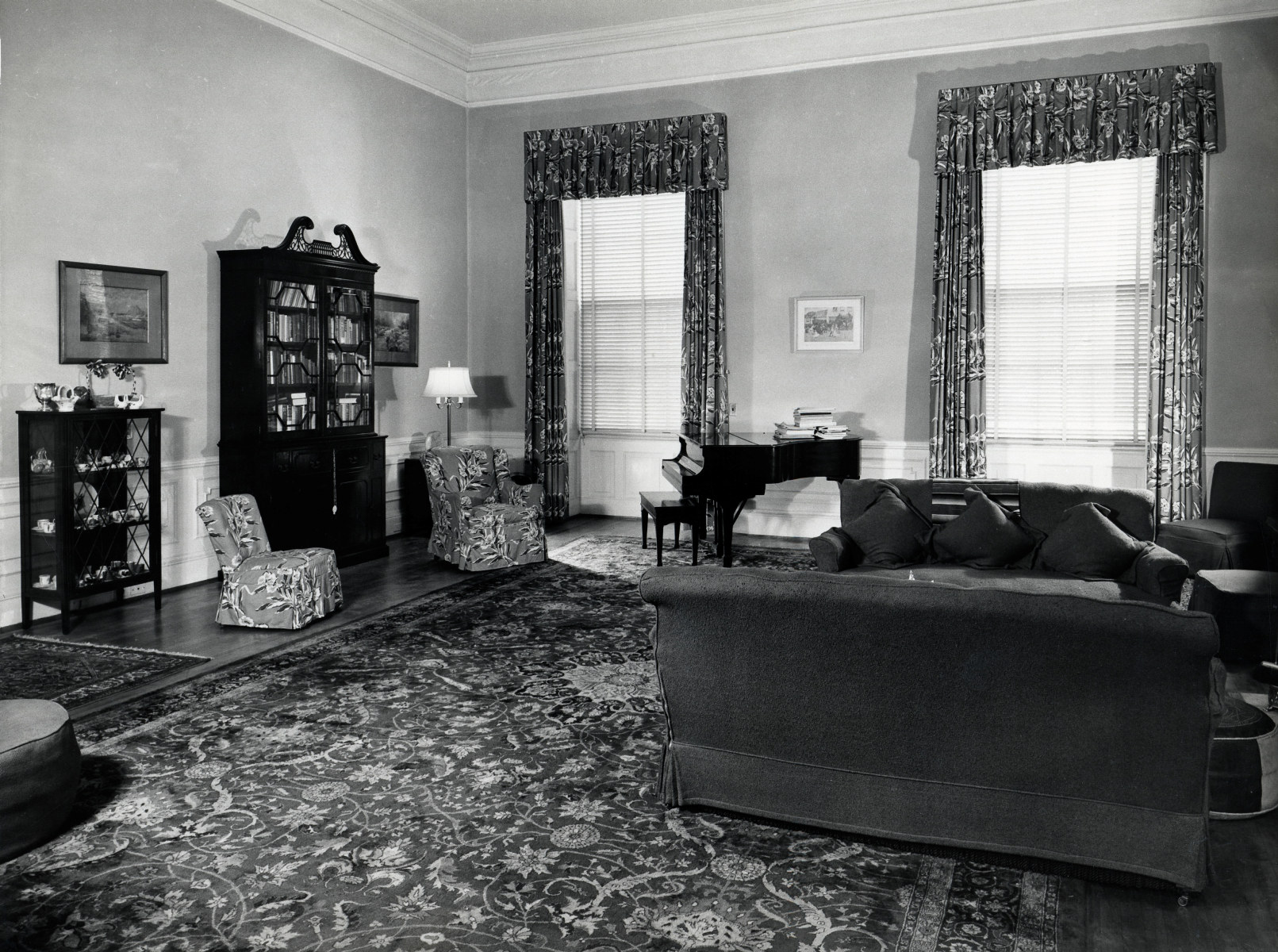
Margaret Truman’s sitting room in August 1948. Today this room is used as the Private Dining Room. (National Park Service)
Margaret’s passion for music incidentally played a role in illuminating the extent of the need for major renovations. In the summer of 1948, a leg of her baby grand piano in her sitting room sank into the floor, causing plaster to fall in the Family Dining Room below.
This incident was a clear sign that this floor was not being adequately supported. The press was not told about the need for renovations until after the conclusion of the 1948 presidential election. After the news was released, a newspaper article quipped that “the sagging floors of the White House are interfering with Margaret Truman’s singing career.” The first family moved across the street to Blair House and the adjacent Lee House in late November 1948, residing there until the White House renovations were completed in March 1952.
Participating in White House social events is a major role of the first family. Although the renovations and campaign season of 1948 greatly disrupted the White House social calendar, Margaret Truman participated in many events during her father’s time as president. She later wrote about the massive numbers of people that she and her mother shook hands with in the receiving lines of receptions. According to Margaret’s account, by the end of their time at the White House, the right hands of both her and her mother had grown by half a glove size from shaking so many hands. These experiences meeting and welcoming guests likely provided good practice for Margaret’s European tour in 1951, laid out by the United States Department of State.
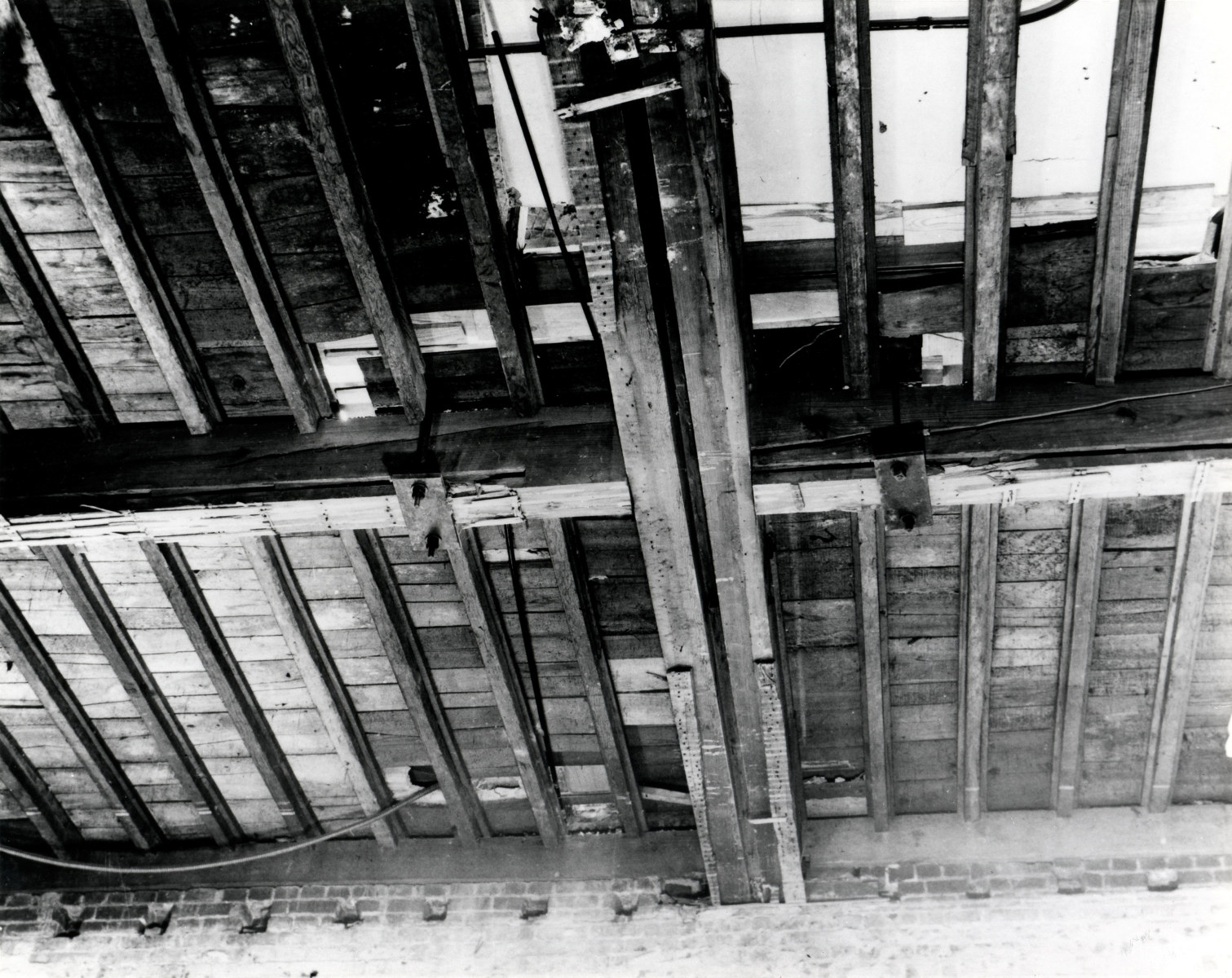
This photograph, seen from the Family Dining Room on the State Floor, shows the bottom of the floor that Margaret Truman’s piano sank into after the plaster ceiling was removed during the renovation. White House Collection
President Truman famously referred to the White House as the “Great White Jail.” However, the sentiment behind this phrase applies not only to presidents, but also to their families. Certainly, there were aspects of being the daughter of a president and living in the White House that were demanding. As Margaret wrote, “I had to accept the fact that I was public property. Not only did everyone in the world feel entitled to know all the details of my life, but there were any number of people, both in and out of the media, who felt free to comment on my appearance.” However, Margaret also believed that “living in the White House is a unique privilege, and for anyone who is as interested in American history as I am, it provides unbeatable insights into the workings of government and the day-to-day lives of men and women who shaped this country.”
After her father left office, Margaret married Clifton Daniel Jr. in 1956 and had four sons. In her professional career, she shifted from singing to conducting a radio show in the 1950’s to later hosting a television show. She also became a successful author, writing acclaimed biographies of her parents and a series of 23 murder mystery novels set in Washington D.C. called the “Capitol Crime Series.”
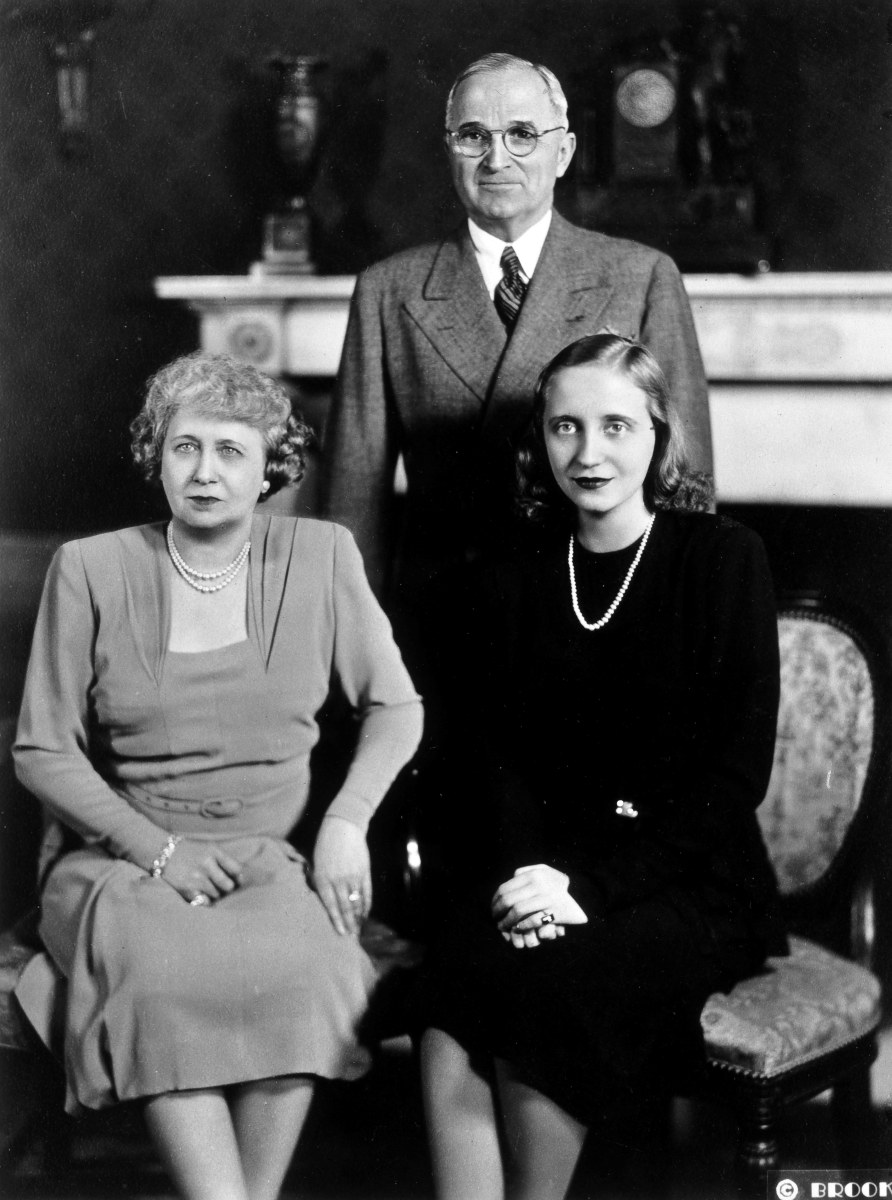
The Truman family poses for a portrait in the Red Room, ca. 1946. (Library of Congress)
This article is published with permission from the White House Historical Association. It was originally published November 3, 2017

